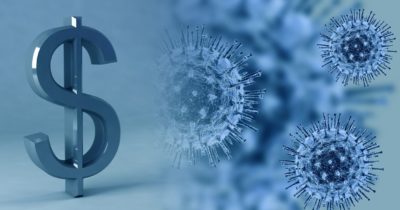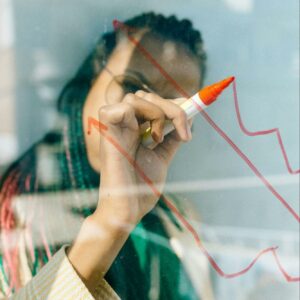
Then the number of new cases of COVID-19 is blazing out of control. According to the COVID Tracking Project, the US has averaged 161,448 new cases daily over the last week, during the first week of December, nearly 2.5 times the summertime peak in July. During the summer, following the US shutdown, the virus eased but a second and third wave has now hit the creating record new infections. The total number of hospitalizations is disappointing. More than 100,200 patients were in US hospitals Wednesday, December 2, according to the COVID Tracking Project. There were more than 2,670 deaths reported according to Johns Hopkins University.
As the winter begins in the US and people move indoors, the risk of the spread of the virus is pervasive. More than 14 million people in the US have had confirmed coronavirus infections and more than 270,000 have died of COVID-19. Of the 50-states in the US, 48, are considered in the red-zone. This is the highest COVID risk level.
The History of the Spread of COVID-19 in the US
The first case of COVID-19 dates back more than 1-year ago. Although the first reported cases did not come until late January, there is now evidence that the coronavirus was spread in the United States well before it was officially recognized. COVID-19 was spreading throughout the continental United States before the first official recorded infection.
A new study looked at blood samples collected by the American Red Cross between December 13 and January 17, some blood donors from nine states tested positive for COVID-19 antibodies. This information describes a situation where these individuals had been infected with the virus before January 20, when officials first confirmed the virus entering the US. The study was published by the Oxford University Press for the Infectious Diseases Society of America.
The virus quickly spread through the New York area, in the early spring, but it had a head start, that no one at the time knew about. Hospitals in several New York City areas were reporting a flu-like virus but could not treat it and sent patients home, without telling them to quarantine. The spread blossomed in March when it was labeled a pandemic by the WHO.
How is the Pandemic Impacting the US Economy?
As the virus spread, US officials were forced to close non-essential parts of the economy which led to one of the worst recessions in history. The US economy contracted in the Q1 and the Q2 of 2020, before rebounding sharply in the Q3 of 2020.
Looking forward, the outlook for Q4 remains positive, although the US economy faces several headwinds. According to the Federal Reserve Bank of Atlanta who forests GDP, their model shows expansion for growth in the Q4. The GDPNow model estimate for real GDP growth in the Q4 of 2020 is 11.1% on December 1, up from 11.0% on November 25. Despite the potential recovery, the dollar has faced substantial headwinds. Yields have been unable to rise, which has led to a tightening of the yield differential which has weighed on the greenback. Forex trading in the US dollar has been a one way street lower.
The Jobs Data is Improving but its Miserable
The employment picture has improved since initially falling out of bed. Even with rising COVID cases throughout the United States, the number of people looking for new unemployment insurance declined in the first week of December. According to the Labor Department, initial jobless claims dropped to 712,000 compared with 787,000 a week earlier. Jobless claims are off their peak of 6.9 million in late March but remain well above the pre-pandemic record. Continuing claims, which are unemployment claims from individuals who are requesting insurance for more than 2-weeks, also fell sharply, dropping 569,000 to 5.52 million.
The Bottom Line
The spread of the virus could lead to a shutdown. Investors seemed concerned and are selling the dollar. When the spread of COVID-19 occurred in the spring of 2020 it leads to a massive economic collapse. Investors are concerned that this might happen again. Unfortunately, the activities that help the US economy rebound, are also spreading the virus. Restaurants, bars, and social gatherings are the culprits and US citizens are reluctant to give up these activities. Sports venues, movies, and concerts have been shuttered, and the economy continues to improve. There is a need for patients until a vaccine is widespread. Until that time, US citizens need to the social distance to avoid their hospitals losing control forcing a spike in the death rate.


